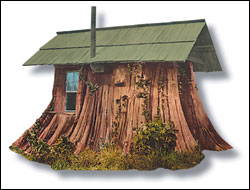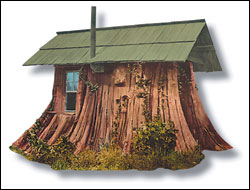People in Seattle don’t really realize how unique Seattle Center is. Among city planners and expo experts, it’s the role model for what can be done with a world’s fair site. Instead of demolishing everything for development like they did in Vancouver, or striking the set and moving on, as in New York, Seattle turned its fairgrounds into a unique civic gathering place that is the hub of major arts institutions, a tourist attraction, and the venue for expressions of our deepest public emotions, from grief over the death of Kurt Cobain to the introspection after 9/11. Former Mayor Paul Schell told The Seattle Times on the occasion of the Center’s 40th anniversary a couple of years ago that it, not the Pike Place Market, is where the soul of Seattle can be found. In the same story, the head of the Center, Virginia Anderson, said that its importance to people had made it virtually untouchable.
This was something she came to realize during the process of redeveloping the old Flag Pavilion site near the International Fountain. During that process, it became clear that the Center’s open space was vitally, almost spiritually, important to people, and they wanted more of it, not less. While the Center is a collection of many public and private interests, everyone there knows that fiddling with the legacy is a tender thing.
What is Seattle Center? A mall? An entertainment complex? A playground? A park? It has elements of all of the above. But whether or not you accept Schell’s idea that the Center is the soul of Seattle, it’s an easier argument to make that the open area of the International Fountain is the seat of the Center’s soul. It is a kind of civic hub that draws us, that anchors the diverse institutions that surround it. It is the gathering place, usually without an admission price or an assigned seat. It’s the very essence of what urban planners strive for: the place where the city comes together. It’s the public’s place, and it’s that because it is a carefully planned, designed, and cultivated public space—the kind we’ve tried to create elsewhere and mostly failed to do.
When the original monorail terminal was torn down at what is now Westlake Park and traffic was closed on Pine Street, it was to open up the center of downtown. But the business interests demanded the street be reopened to cars, and the space proved to be too cramped to be much of a park. The Seattle Commons proposal for South Lake Union sought to rectify the fact that Seattle lacked a major, downtown urban park like those in New York or San Francisco. That plan, pushed by monorailman Joel Horn, carried tons of public/private baggage and failed at the ballot box, though Paul Allen is building the dream today with his own money, and without the park.
Seattle Center is our Central Park, by both intention and default. Maybe it’s not what the Olmsteds would have imagined, but Seattle Center requires the kind of stewardship and public oversight that any urban landmark park deserves.
But it’s not getting it. The proposal to run the monorail through Seattle Center is a travesty, a budget expedience that benefits a few commercial operators but violates the public space around the International Fountain. The proposed Green Line route cuts right through the heart of the Center. It will divide the space with tracks and 60-foot-high pillars. It looks desirable only because other, better routes were defeated by business and neighborhood interests and because many of the Center’s other tenants only seem to care about what goes on inside their auditoriums, not outside. There is no residential population to stand up for the Center per se, except, of course, the huge public festivals that have come to define that space for many people. The people who run Bumbershoot and the Folklife Festival are opposed to the fountain route. They believe it puts at risk the future of events that, including the Bite of Seattle, draw nearly 1 million people each year to the center of the Center.
In other parts of the city, the Green Line has wisely stayed in transportation corridors. But not here. The citizens of Lower Queen Anne complain about the monorail’s potential for noise and disruption; arts organizations worry about access to their venues along Mercer Street. If true, the monorail could be a problem anyplace, not just in the presence of a public park like the Center. But if the monorail project leaders stay consistent to their conviction that the system is an asset to all of the neighborhoods through which it runs, it can’t accept these arguments against having it run through the surrounding neighborhood instead of straight through Seattle Center. If the monorail doesn’t make sense on a street like Mercer, it doesn’t make sense anywhere. And on the issue of cost, we shouldn’t let a public space like the Center fall victim to bad planning or questionable spending priorities.
The route through Seattle Center has big money guys behind it, like Allen’s Vulcan, the Space Needle operators, and some of the influential private donors to arts groups along Mercer. It’s a group that City Council member Peter Steinbrueck, an opponent of the International Fountain route, calls “an insider’s club that writes fat checks.”
A coalition is fighting those interests. The City Council will vote to approve a route soon. The real question is, will the thousands of people who use the Center speak up for our “soul”? The big money is betting they won’t.







